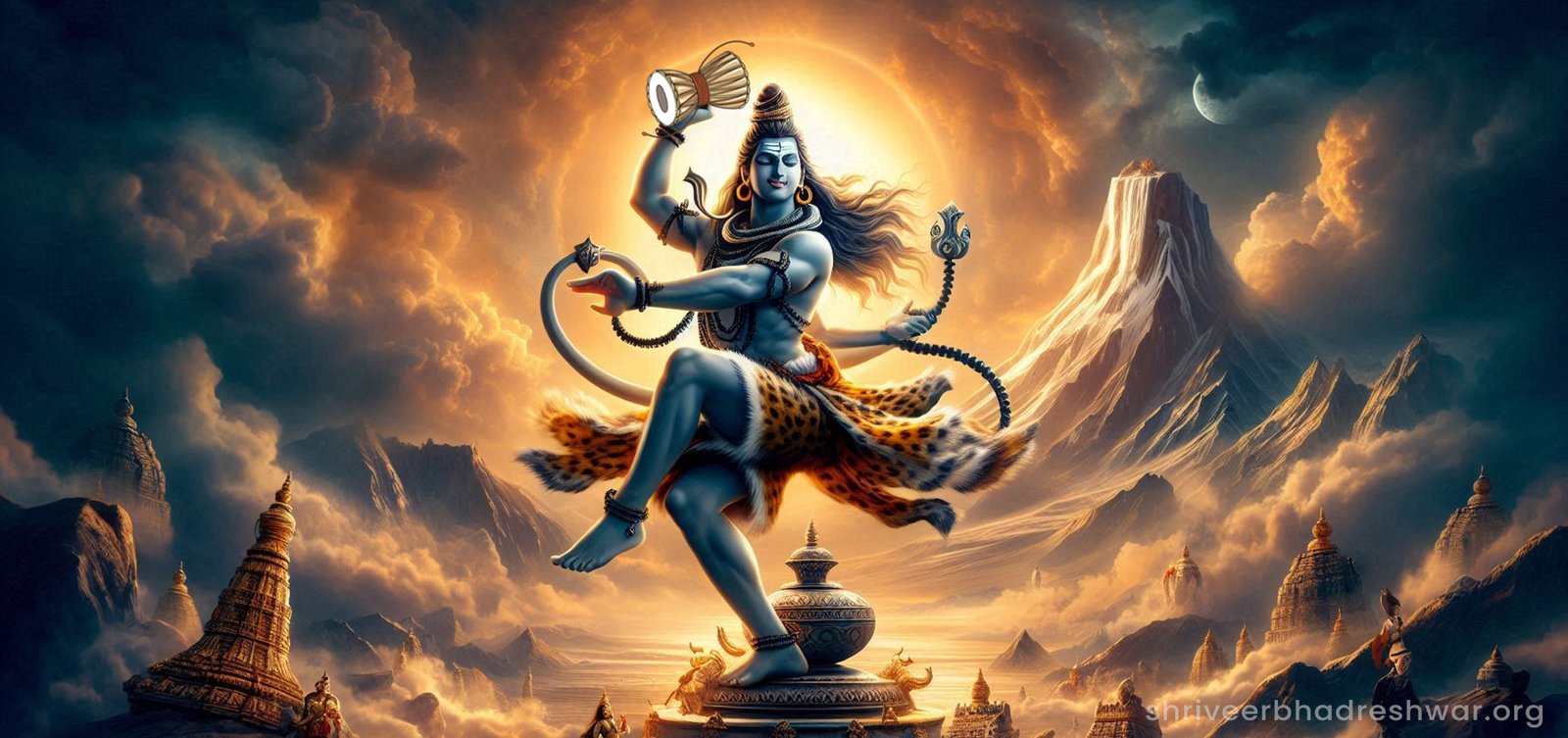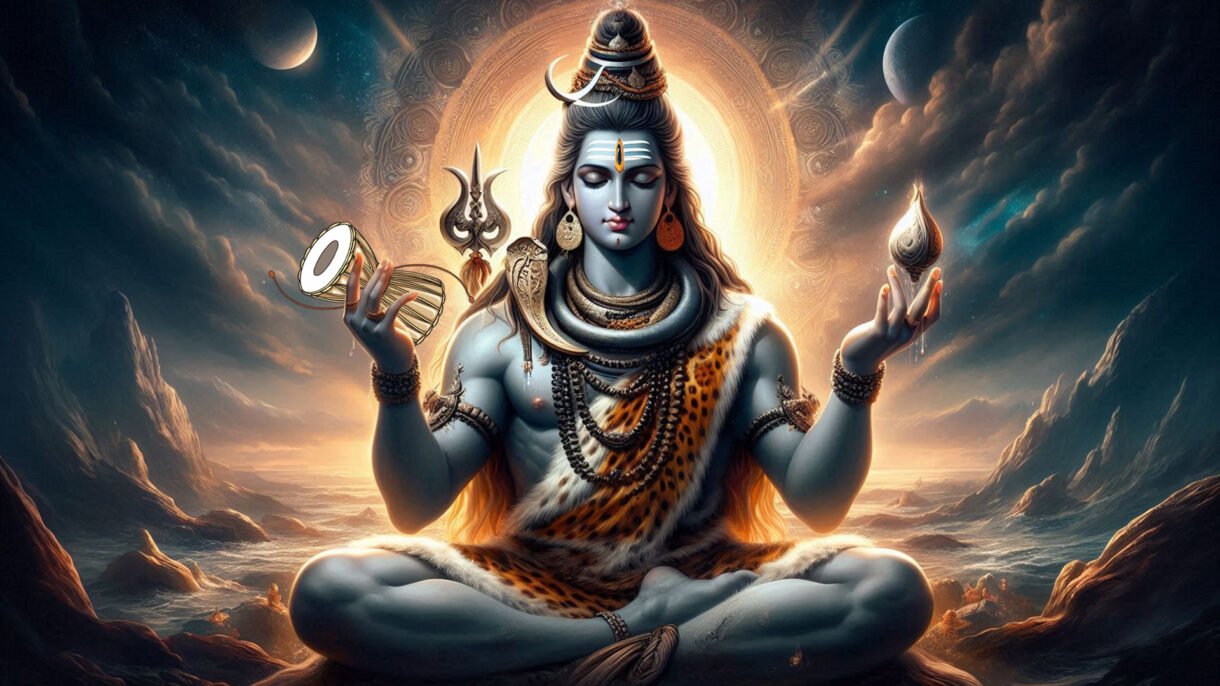In the vast tapestry of Hindu mythology, few symbols resonate as deeply and widely as Lord Shiva’s damaru, the small drum that accompanies this formidable deity. Beyond its physical form, the damaru embodies profound philosophical and spiritual meanings, serving as a bridge between the divine and the human.
The Mythological Origins of the Damaru
The damaru is not merely an instrument; it is a cosmic symbol. According to Hindu mythology, the damaru originated from Lord Shiva himself. Legends narrate that after the demise of Sati, Shiva’s beloved wife, he became engulfed in sorrow and rage. In his grief, he wandered the cosmos, neglecting his duties as the protector of the universe. It was during this time of turmoil that the damaru took form.
The sound of the damaru is said to represent the primal rhythm of creation, encapsulating the dualities of existence—creation and destruction, life and death, joy and sorrow. When Shiva plays the damaru, it is believed that he creates the rhythm of the universe, symbolizing the pulse of life that beats through all beings.
The Symbolism of the Damaru
The damaru is typically depicted as a small hourglass-shaped drum, held in Shiva’s right hand. This shape is significant, as it represents the interplay of opposites—spirit and matter, masculine and feminine, chaos and order. The two ends of the damaru produce different sounds, signifying the dual nature of reality.
Creation and Destruction
The sound of the damaru resonates with the essence of creation. In Hindu philosophy, creation is often associated with the divine play, or Lila, and the damaru’s beat symbolizes the divine rhythm of this cosmic play. Conversely, it also embodies destruction, reflecting Shiva’s role as the destroyer in the Holy Trinity (Trimurti). This duality emphasizes that destruction is not an end but a precursor to rebirth and renewal, a necessary part of the cyclical nature of existence.
The Call to Meditation
The damaru also serves as a call to meditation and introspection. Its rhythmic beat invites practitioners to synchronize their breath and consciousness with the cosmic rhythm. Just as the damaru echoes through the universe, the practice of meditation allows individuals to tune into their inner selves, fostering a connection with the divine.
The Dance of the Universe

When Shiva dances, often depicted as the Nataraja, he is accompanied by the sound of the damaru. This dance symbolizes the dynamic, ever-changing nature of the universe. It is a reminder that life is a continuous cycle of creation, preservation, and destruction. The dance and the damaru together convey the message that one must embrace the flow of life, surrendering to its rhythms while remaining anchored in the stillness of the self.
The Damaru in Hindu Practices
In Hindu rituals and practices, the damaru holds a significant place. It is often used during prayers, ceremonies, and spiritual gatherings. The sound of the damaru is believed to purify the atmosphere, dispelling negativity and invoking divine blessings. Many devotees use its rhythm to enhance their meditation, allowing the beat to guide their thoughts towards higher consciousness. It is believed that beating of the Damaru by Lord Shiva produced the very first sound which is called ‘Nada’.
Connecting to the Divine
The damaru acts as a conduit between the earthly and the celestial. Its sound is believed to resonate with the fundamental vibrations of the universe, connecting practitioners to the divine. By attuning oneself to these vibrations, individuals can experience a sense of unity with the cosmos and a deeper understanding of their place within it.
Philosophical Insights from the Damaru
The philosophies encapsulated in the damaru extend beyond mere symbolism; they invite introspection and a deeper understanding of life’s complexities.
Embracing Duality
Life is full of dualities—happiness and sadness, success and failure, love and loss. The damaru teaches us to embrace these dualities rather than shy away from them. By acknowledging both sides of existence, we can find balance and harmony within ourselves.
The Impermanence of Life
The damaru serves as a reminder of the impermanence of all things. Just as the sound produced fades away, so too do moments in life pass. This understanding encourages us to cherish each moment and recognize the transient nature of our experiences.
The Journey Inward
The damaru’s rhythm calls us to embark on an inward journey. In the hustle and bustle of modern life, it is easy to lose touch with our inner selves. The sound of the damaru reminds us to pause, reflect, and reconnect with our essence, fostering spiritual growth and enlightenment.
Summary:
Lord Shiva’s damaru is more than a musical instrument; it is a profound symbol that encapsulates the essence of existence in Hindu philosophy. Through its sound, we are reminded of the cyclical nature of life, the importance of embracing dualities, and the necessity of introspection. In the sacred beats of the damaru, we find a call to dance with life, to embrace its rhythms, and to connect with the divine essence that resides within us all. As we contemplate the damaru, may we be inspired to live harmoniously with the universe, celebrating both its joys and its sorrows.

